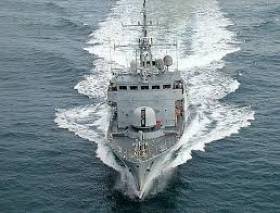Displaying items by tag: Moville
CoastGuard IMSARC Demo a Success Off Donegal
The Irish Coast Guard co-ordinated a very successful Marine Search and Rescue demonstration yesterday, Saturday 16th July. As Afloat.ie reported previously, the exercise in Moville Co Donegal involved some of Ireland’s principal Search and Rescue resources. Participants included Donegal based volunteer Coast Guard units, the Sligo based Coast Guard Rescue Helicopter, Naval ship LÉ Orla, Air Corps Casa, RNLI’s new Shannon Class All Weather Lifeboat, Bord Iascaigh Mhara, UK Maritime Coastguard Agency, Irish Water Safety, Mountain Rescue Ireland and the Civil Defence.
Speaking after the event Gerard O’Flynn, the Coast Guard’s Search and Rescue Operations Manager said: ‘This exercise afforded the public a wonderful opportunity to see Ireland’s search and rescue resources conducting a series a realistic but challenging tasks, more importantly it enabled the Coast Guard to exercise interoperability between the different assets.”
The event included a series of water based safety demonstrations.
“Prevention and adherence to basic safety is the key element in minimising loss of life at sea and on our waterways”, concluded SARs Manager Gerard O’Flynn.
The main events:
Mud rescue demonstration by nearby members of the Maritime Coastguard Agency, Bay Field in the low water river bed.
The Donegal Mountain Rescue team along with their colleagues in the Civil Defence also at Bay Field displayed their new Drone
Greencastle Coast Guard unit executed a number of cliff rescue displays.
Rescue 115, the Sligo based rescue helicopter along with the crew of LÉ Orla completed a number of winching exercise. From the deck of LÉ Orla and a “wet” lift.
The Air Corps Casa demonstrated the use of airborne life rafts as well as conducting communications exercises with air and surface resources.
Over the course of the day, Volunteer Coast Guard units from Donegal, Mulroy, Killybegs, Greencastle and Bunbeg completed number of rescue manoeuvres including - man over board, swimmer/paddle board in difficult, fishing vessel on fire.





























































